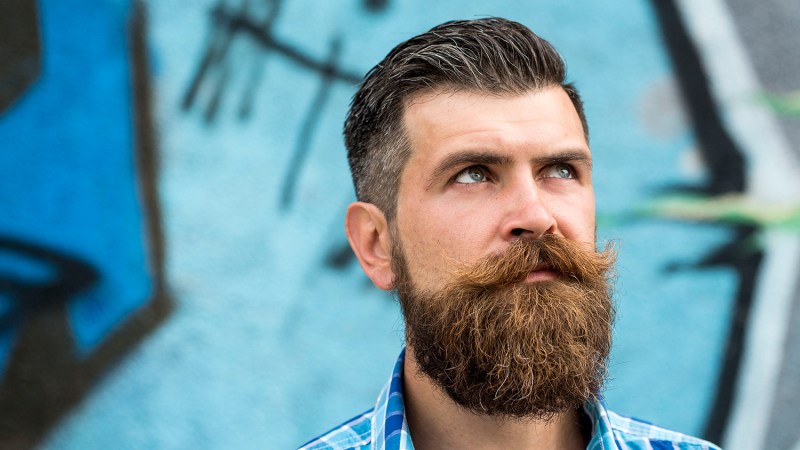Beards are one of the best ways to define your own personal style. How you decide to grow one out and shape it can be as unique and individual to you as a personal hairstyle can be; that’s true if you decide to go bald and bearded as well. However you decide to shape your beard, how you decide to take care of your beard is almost even more important.
The truth is that just because you decide to grow out your beard, that doesn’t mean you should neglect the skin below it. So how do you properly care for your beard and the skin under it? What about if you just so happen to have some other skin issues going on? We asked five skincare experts about all things related to beards, skin, and products to make sure you have the best grooming skincare routine around to maximize your beard’s growth and health.
Most common beard issues and solutions
Here are some of the most common beard issues that men struggle with on a consistent basis, and input from the professionals on how to manage those issues.
Dandruff
“While we normally think of dandruff occurring on the scalp, it is possible for the same thing to happen on the face, a condition we term seborrheic dermatitis,” said Dr. Dustin Portela, a board-certified dermatologist with a large social presence of over 2.3 million followers on TikTok. “This may be more likely to occur in men who use certain types of beard oils or conditioners for their facial hair.”
Dr. Portela says that one way you can combat this issue is by investing in a high-quality beard serum.
“You can often still use serums on the skin below the beard. A lightweight serum can be worked through the facial hair onto the skin.”
What exactly causes beard dandruff?
“Dandruff can be caused by a number of factors, but most commonly [it is caused by] dry skin due to harsh cleansers or fungal infections, which can occur when yeast that lives on the skin is active due to lack of sunlight,” said Hallie Font, a certified esthetician and director of esthetics of Hi, skin, a skincare studio. She echoed the advice of Dr. Portela and suggested adding a “monthly facial for maintenance, which allows for a deep cleanse and reset.”
Dry and itchy beard
A fairly common issue for most people with a beard is dry and itchy skin, especially under the beard, and unkempt and hard-to-manage beard hair. Michael Konieczny is the director of research and development at Universal Beauty Products, Inc. and is an expert in styling products. He has plenty of experience helping men solve the problem of dry skin under the beard and recommends proper cleansing and hydration of the area.
“Throughout the day, food, dirt, and other particles can get trapped in beard hair,” he said. “Without properly cleansing the area, skin problems can occur. Additionally, proper hydration will help soften the beard hair and prevent irritation and dry skin.”
So what’s the best solution? Font recommends a consistent routine. Start with “a gentle exfoliating scrub that you can perform two to three times per week. From there, make sure to use a gentle moisturizer — you can use a thicker moisturizer if you are prone to extra-dry skin — daily, and lastly, follow up with a great beard oil daily.”
Ingrown hairs and breakouts/acne
“Excess facial hair may lead to some guys experiencing persistent acne or ingrown hairs. Proper care of the skin below the beard can help limit this significantly,” said Dr. Portela. His solution to this problem is simple. He recommends “a gentle face cleanser that you can work through the beard while you shower. You can also use any beard-specific conditioning products that you would like.”
Marie Baker FNP-BC, president and medical director of DermaCrush Medical Aesthetics, also notes that “you want to prioritize cleansing the area with an exfoliative cleanser while also preventing the accumulation of dead skin cells and bacterial growth.” She recommends “a foaming cleanser and topical products with salicylic and glycolic acids [that] will kill the acne-causing bacteria while helping to exfoliate the dead skin cells. You’ll want to really work the cleanser with a mild massaging motion and make sure to rinse well.”
Baker shared her secret to fast-acting rejuvenation too.
“A topical retinol product will be essential to your routine as it will help treat any possible acne by increasing cell turnover and unclogging pores that may lead to acne or ingrown hairs. In addition, retinol is also a powerful anti-aging topical.”
Under-beard skin cancer
“Although a beard may provide some sun protection to the underlying skin, it is still possible to develop skin cancer under the beard,” said Dr. Portela. “These are often detected at later stages because they are harder to see when they are small. It’s important to get to know the skin below your beard to be aware of any suspicious changes.”
How can you make sure this doesn’t happen to you, or catch symptoms early?
“Many men with facial hair may skip sunscreen because it is difficult to apply it or gets clumped up in their facial hair. Sunscreen remains highly important even with facial hair, however. I recommend finding one you like and using it daily.”

Skincare for men
Regardless of what ailment seems to plague you and your beard, by utilizing our expert grooming tips combined with a consistent skincare routine, you can be sure to fight them head-on and have a well-kept, beautiful beard.




